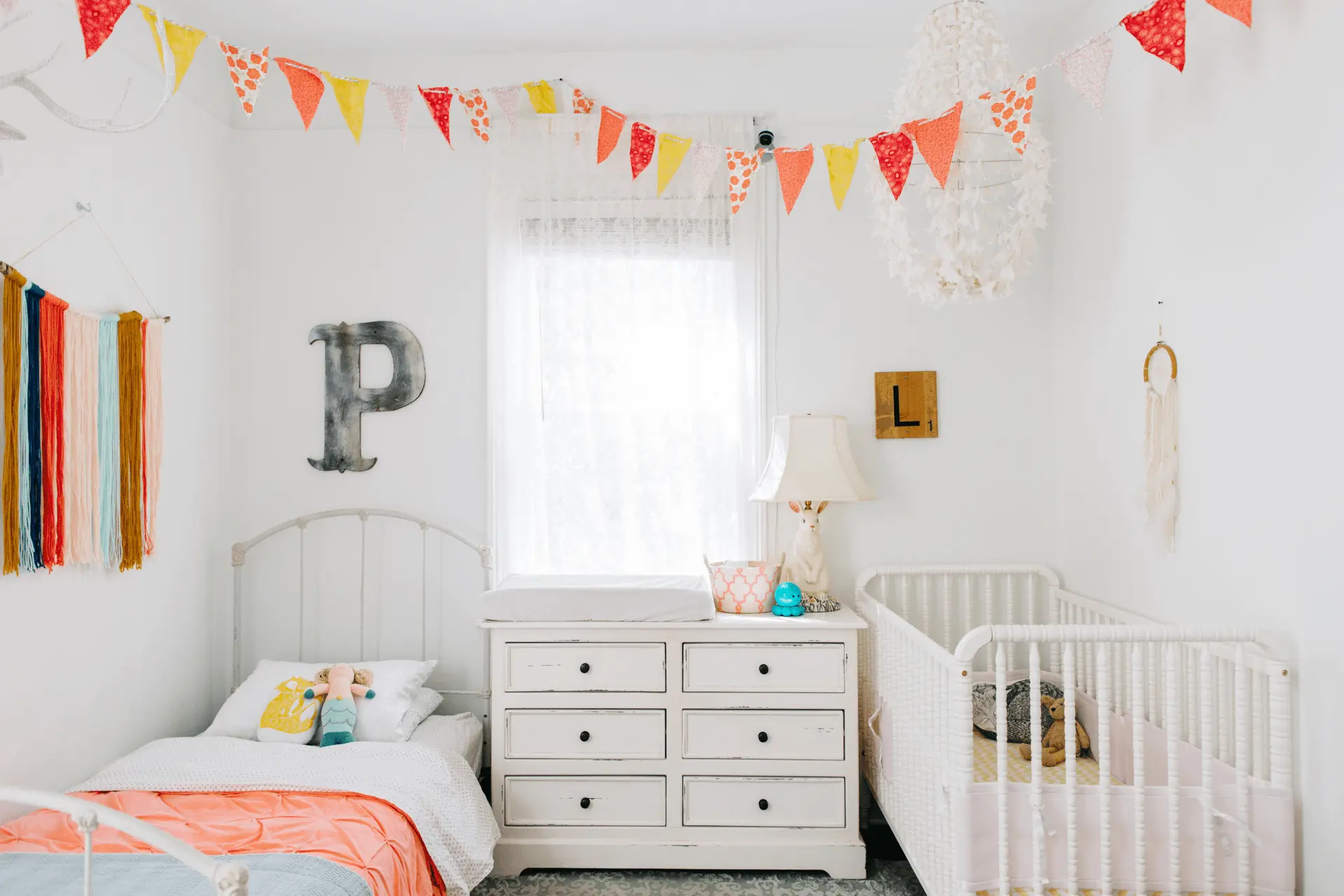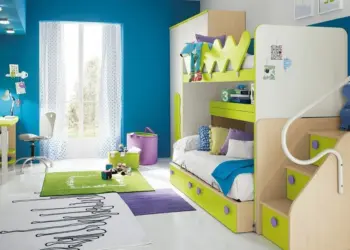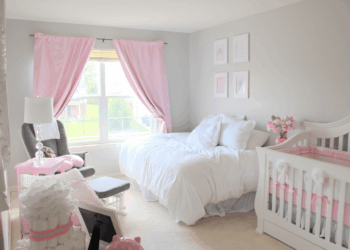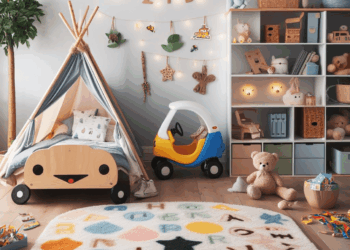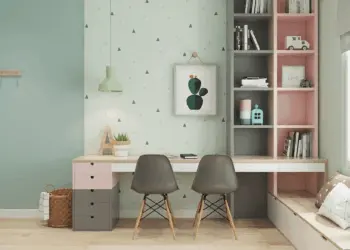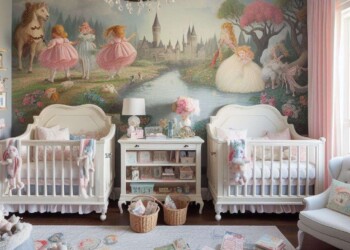Designing a shared bedroom for toddlers and kids can be an exciting yet challenging task. It’s an opportunity to foster a sense of togetherness while accommodating the unique needs and preferences of each child. In this guide, we’ll explore creative and practical ideas for crafting a harmonious and functional shared bedroom that your little ones will love.
Table of Contents
1. Shared Bedroom: Space Planning: A Shared Vision
Before diving into decor, start with a well-thought-out space plan. Consider the room’s layout and the age and needs of your children. Create a shared vision with their input to ensure everyone is on board.
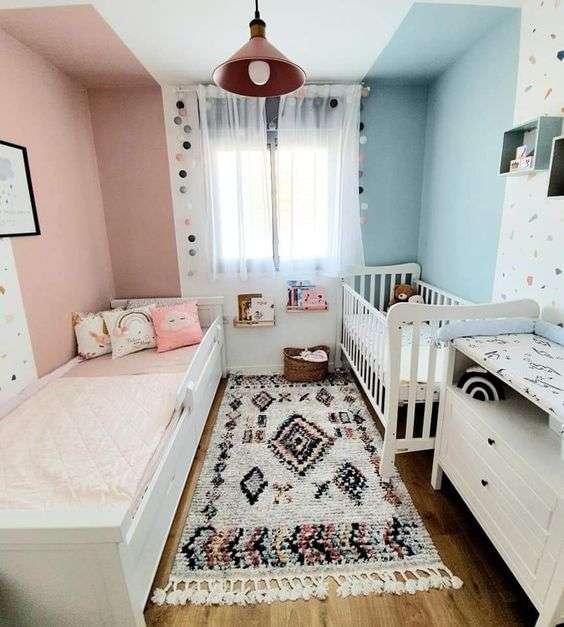
2. Shared Bedroom: Bunk Beds: Vertical Space Savers
Bunk beds are a classic choice for shared bedrooms. They maximize floor space, leaving more room for play and activities and are a practical choice for shared bedrooms. They save space and allow each child to have their own sleeping area. Opt for sturdy and safe designs with built-in safety rails for the top bunk.
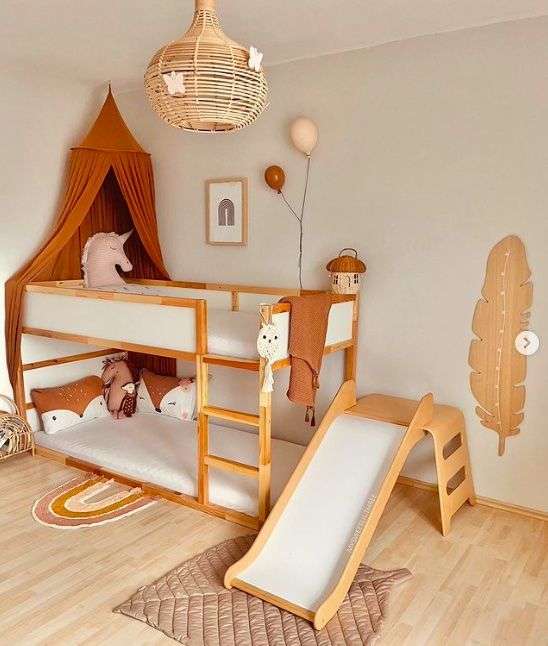
3. Shared Bedroom: Personalized Bedding: A Touch of Individuality
Let each child express their personality through personalized bedding. Choose themes, colors, or patterns that reflect their interests and preferences.
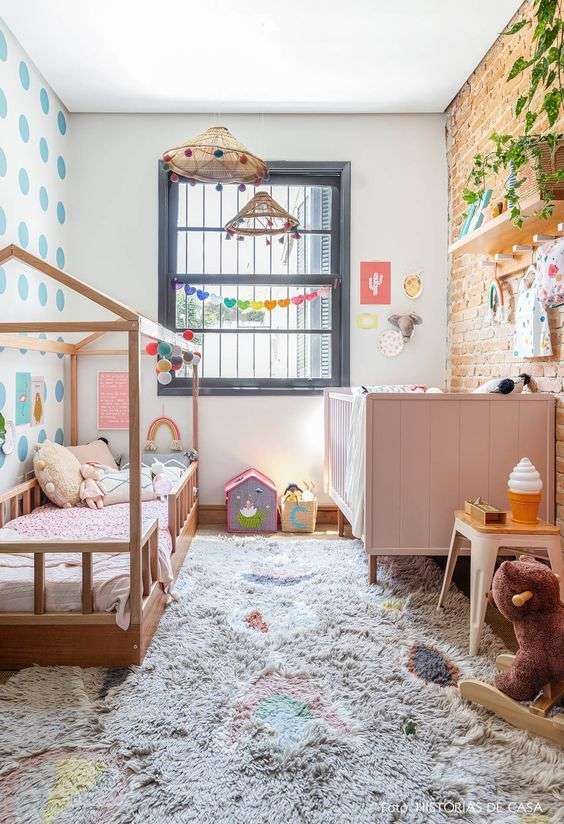
4. Shared Bedroom: Shared Dresser: Efficient Storage
A shared dresser with separate drawers or compartments for each child helps maintain organization. Label drawers with names or pictures for easy access.
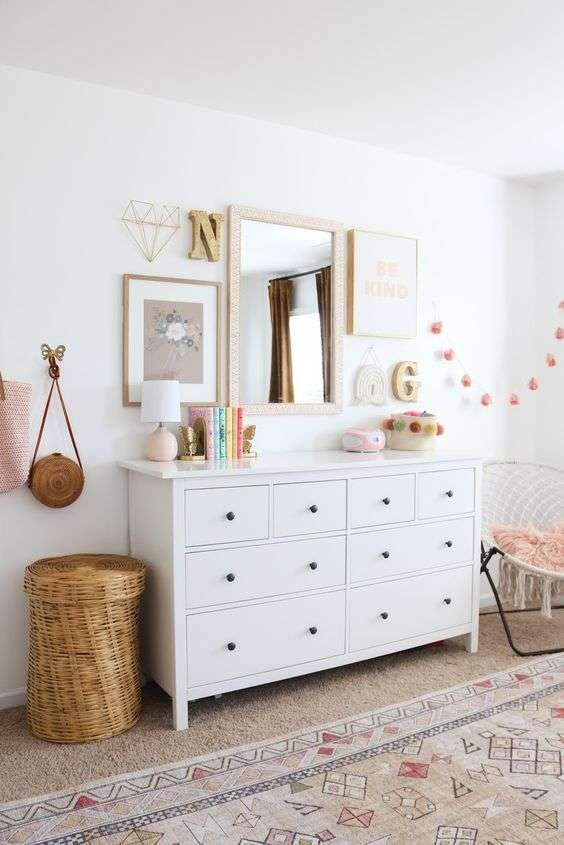
5. Shared Bedroom: Color Coding: Define Zones
Use color coding to designate each child’s space within the room. From wall paint to storage bins, assign a specific color to each child’s belongings.
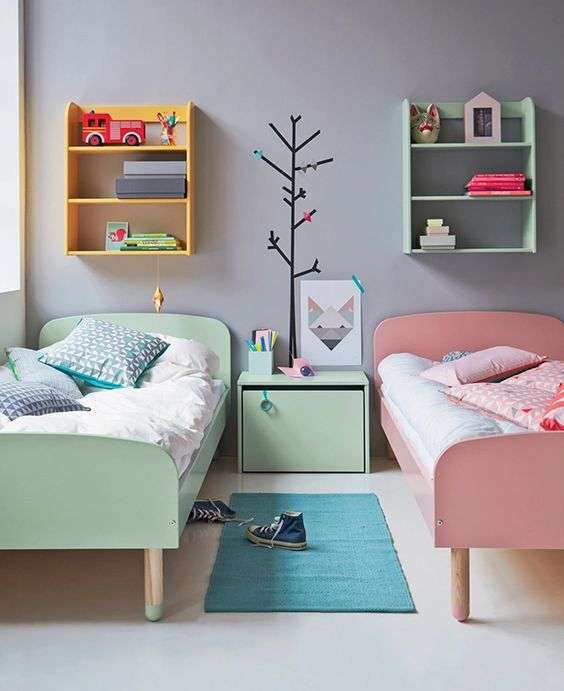
6. Shared Bedroom: Multipurpose Furniture: Functionality Matters
Invest in multipurpose furniture like trundle beds, bookcase headboards, or storage ottomans to make the most of your space.
7. Shared Bedroom: Dual Workstations for Learning and Creativity
If your children are of school-going age, incorporating dual workstations can be a game-changer. It provides each child with a dedicated space for studying and creative activities. Ensure proper lighting and ergonomic chairs for comfort.
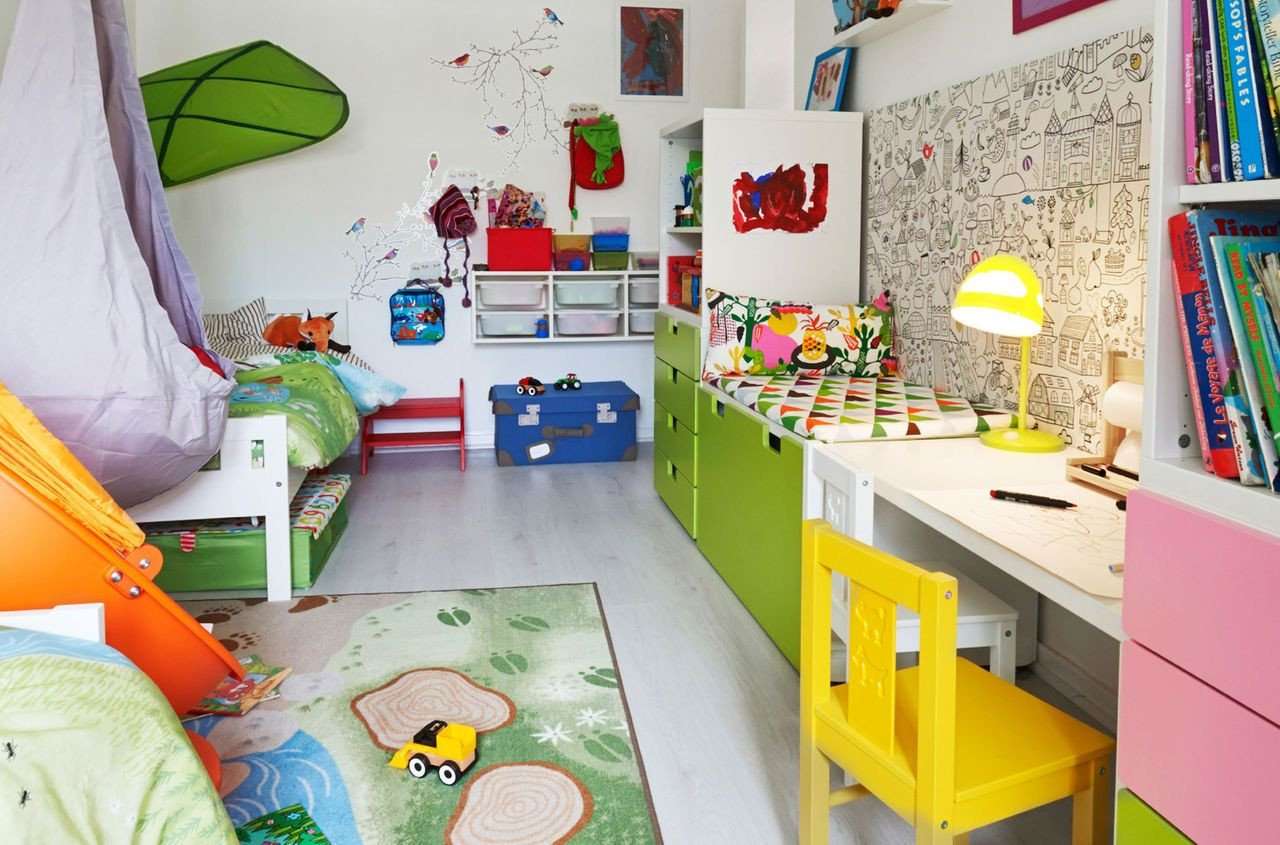
8. Shared Bedroom: Personalized Decor: Walls of Memories
Allow your children to contribute to the decor. Create a gallery wall where they can display their artwork and cherished photos.
- Wall Decals and Artwork Wall decals and artwork are fantastic tools for personalizing the room without making permanent changes. Let your children choose decals that resonate with their interests, and encourage them to display their artwork on the walls. It adds character to the room and reinforces their sense of ownership.
9. Shared Bedroom: Shared Play Area: Foster Togetherness
Designate a shared play area with toys and games where your children can bond and play together.
10. Shared Bedroom: Privacy Solutions: Curtains and Dividers
If privacy is a concern, consider using curtains or room dividers to create individual spaces within the shared bedroom.
11. Shared Bedroom: Reading Nooks: Cozy Corners
Create cozy reading nooks for each child with comfortable seating, pillows, and their favorite books.
12. Shared Bedroom: Desk Space: Study Stations
If your children are school-age, provide dedicated desk space for each child to focus on their studies.
13. Shared Bedroom: Shared Themes: Finding Common Ground
Explore themes that both children enjoy, whether it’s a favorite cartoon character, nature, or outer space, and incorporate them into the decor.
14. Shared Bedroom: Create Defined Zones
Even within a shared bedroom, it’s essential to create defined zones for sleeping, playing, and studying. You can achieve this through the strategic placement of furniture and rugs. This helps children understand boundaries and fosters a sense of ownership over their space.
15. Shared Bedroom: Personal Space for Each Child
While shared bedrooms promote bonding, it’s equally essential to provide each child with their personal space. This can be a small corner with a cozy chair for reading or a shelf for displaying their treasures. Having a space to call their own can help them feel more connected to the room.
16. Shared Bedroom: Storage Solutions: Organize Efficiently
Shared bedrooms often require creative storage solutions. Consider under-bed storage drawers, wall-mounted shelves, and bins to keep toys and belongings organized. Teach your children the importance of tidying up and responsibility for their space.
17. Shared Bedroom: Respect Individual Sleep Schedules
If one child goes to bed earlier, create a sleep-friendly environment by using curtains or dividers to separate their sleeping spaces.
18. Shared Bedroom: Incorporate Siblings: Shared Decision Making
It’s crucial to involve both children in the design process. Listen to their preferences and find ways to incorporate elements they both love. Whether it’s a shared interest in a particular theme or color, finding common ground can help create a harmonious atmosphere.
19. Shared Bedroom: Safety First: Childproofing
Prioritize safety by childproofing the room with secure furniture, electrical outlet covers, and soft corners on sharp furniture.
20. Shared Bedroom: Regular Updates: Growing Together
As your children grow, their needs and preferences will change. Be open to periodic updates and adjustments to the room’s layout and decor.
21. Shared Bedroom: Regular Communication
Lastly, maintain open communication with your children about their shared bedroom. Encourage them to express their feelings and preferences. As they grow, their needs and tastes may change, so be flexible and open to adapting the room accordingly.
Designing a shared bedroom for toddlers and kids is an opportunity to create a space where siblings can bond, learn, and grow together. By incorporating these creative ideas and involving your children in the process, you can craft a shared bedroom that reflects their individuality while fostering a strong sense of togetherness.
FAQs
What if my children have different interests and preferences?
Find common ground through shared themes or color schemes while allowing each child to have a personalized corner within the room.
Can I update the room as my children grow older?
Absolutely! The room should evolve as your children do. Involve them in the process to reflect their changing tastes.
